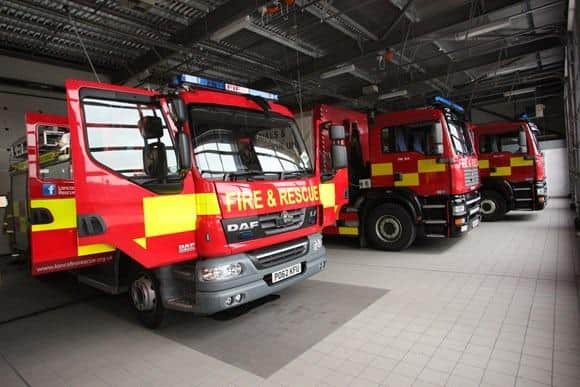“Outstanding” year for Lancashire Fire and Rescue Service as it leads the way with innovative new technology
and live on Freeview channel 276
In it’s annual report out this week, LFRS said it has:
- attended 19,000 emergency incidents (an increase of 10 per cent on the year before)
- conducted more than 17,600 home fire safety checks (an increase of 30 per cent)
Advertisement
Hide AdAdvertisement
Hide Ad- educated 66,141 children and young people on how to prevent incidents (an increase of 213 per cent)
- recruited 50 on-call firefighters
- enrolled 70 cadets.
As well as the more traditional roles of the fire and rescue service, crews have also continued to help with the roll-out of the Covid vaccination programme.


“Vital work”
Chief Fire Officer, Justin Johnston, said: “Over the course of the pandemic, we have helped to deliver approximately 500,000 vaccinations, with around 125,000 vaccines administered by our staff.
“This vital work was carried out alongside attending almost 19,000 emergency incidents and conducting over 17,600 home fire safety checks, as well as delivering many other services across the county.
Advertisement
Hide AdAdvertisement
Hide Ad“Towards the end of last year, the service was inspected by Her Majesty’s Inspectorate of Constabulary and Fire and Rescue Services. The inspection found that Lancashire Fire and Rescue Service is performing exceptionally well and recognised that we are ‘outstanding’ for promoting values and culture.
“I am incredibly proud of these achievements which reflect the efforts of all our people and demonstrate that we continue to be one of the best equipped, best trained and most professional fire and rescue services in the country.”
Are there improvements to be made?
There are some areas where the service has fallen below the performance of 20/21.
The report shows that the average incident response time for 21/22 was 7 minutes 56 seconds - 16 seconds slower than the year before.
Advertisement
Hide AdAdvertisement
Hide AdThe number of available engines has also fallen from 90.4 per cent to 88.2 per cent.
A spokesman for LFRS explained to the Post that of the service's 58 fire engines, on average, 51 have been availabe to respond to incidents.
From a wholetime perspective, fire engine availability is above 99 per cent, but the reasons for this not being 100 per cent can be due to fire engines breaking down, equipment malfunctions, crew welfare and Covid.
On-call fire engine availability has been below 80 per cent and this is mostly down to not having the number of on-call firefighters available.
>>>Click here for how and why you should apply to be an on-call firefighter
Advertisement
Hide AdAdvertisement
Hide AdSadly over the course of 2021/22 six people have died in accidental house fires - up from two people the year before - and 40 people were injured. This is up from 35 the year before.
The number of call-outs to road traffic collisions (RTCs) has also increased significantly, from 497 call-outs in 2020/21 to 721 in 21/22.
Future-proofing
The service is drawing up a new climate change operational response plan regarding both the prevalence and duration of large-scale flooding and wildfire events.
As part of that plan two new Hagglund off-road vehciles have been purchased, which will help crews respond more efficiently and effectively to fires and flooding incidents in difficult-to-access locations.
Advertisement
Hide AdAdvertisement
Hide AdEvery firefighter in the Service already has a bespoke flood suit and this year they will receive specialist personal protective equipment for fighting wildfires, making Lancashire the first fire and rescue service in the UK to have wildfire kit for all frontline responders.
A contract for two new command units has also been awarded with arrival into the service expected in 2023-24.
Leading nationally on the use of drones
The service is also leading the way in the use of drones for both police and fire and rescue services.
This included the use of four new drones with advanced search and artificial intelligence capabilities; a new remotely operated vehicle that is being trialled for underwater rescues; and advanced software which allows the team to create aerial maps of large-scale incidents such as wildfires and floods in near real time.